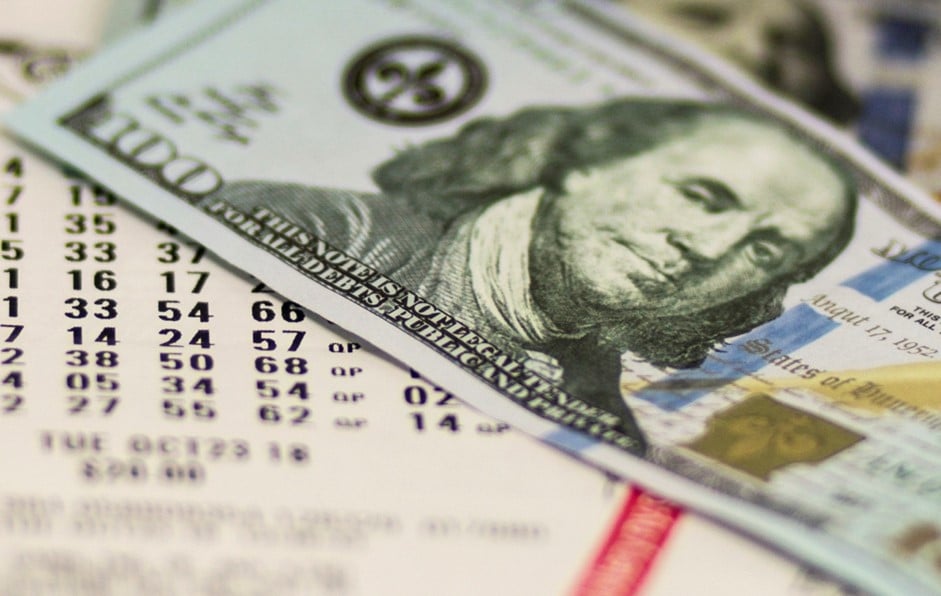How to Play This Wall Street Melt Down

Trade wars continue to roil the stock market … good news on the semiconductor front … an AI Applier recommendation from Eric Fry … more jobs losses due to AI
Earlier today, all three major stock indexes found themselves deep in the red as President Trump’s trade war escalates.
This morning, 25% tariffs on imports from Canada and Mexico went into effect, as did 20% levies on Chinese goods.
In response, China will impose new 10%-15% tariffs on certain U.S. imports next week… Canada is applying 25% tariffs on more than $20B of U.S. imports immediately … and Mexican President Claudia Sheinbaum said she will announce her tariff plans this weekend.
Stepping back, brief levies used as a negotiating tool are one thing… extended tariffs as a “new normal” for U.S. trade policy is another.
Today’s market upheaval reflects fears that we’re slipping into a “new normal” that would weigh on corporate earnings and the U.S. consumer.
The related economic uncertainty is creating a “batten down the hatches” mindset for corporate managers that’s slowing business activity.
For more on this, let’s jump to our hypergrowth expert Luke Lango. From yesterday’s Innovation Investor Daily Notes:
The U.S. economy is clearly buckling under the pressure of heightened policy uncertainty.
GDP grew by 2.3% in the fourth quarter of 2024. Real-time estimates for GDP growth in Q1 have fallen to -1.5%.
In other words, U.S. economic growth has fallen off a cliff over the past two months from steady growth (2.3%) to fairly meaningful contraction (-1.5%) …
According to the February ISM Manufacturing Report released [yesterday] morning, the U.S. economy is moving in all the wrong directions right now.
Business activity is collapsing, with the New Orders index falling from 55.1 to 48.6 – its lowest level since October 2024.
Labor conditions are deteriorating, with the Employment index falling from 50.3 to 47.6 – its lowest level since October 2023.
And inflation pressures are spiking, with the Prices Paid index surging from 54.9 to 62.4 – its highest level since June 2022.
Everything is going in the wrong direction.
Before we get too bearish, Luke remains optimistic that these tariffs won’t become permanent
He sees stocks roaring back when today’s uncertainty dissipates. And that point is approaching.
Back to Luke:
Policy uncertainty will abate in the coming weeks. It may even be replaced by policy optimism as the new administration shifts its focus from tariffs and federal spending cuts to deregulation and tax cuts.
As that happens, stocks should rebound…
Aside from policy risks, the fundamentals underlying the stock market remain positive and strong. That’s why we believe that as policy risks ease, this market will blast higher.
I’ll note that stocks are trading off their morning lows as I write early afternoon. The Nasdaq has jumped from “2% down” to less than half a percent lower.
Who knows where we’ll close, but this is encouraging, and has shades of Luke’s forecasted rebound.
Circling back to tariffs, Trump will likely defend/promote his policies tonight when he delivers the first joint congressional address of his second term. In the meantime, mind your stop-losses…and look for great stocks that are now selling at panic prices.
I’ll share one stock to consider below.
Following the trail of innovation…
Let’s follow the steppingstones.
AI is the future…
The nation that leads the AI race will gain a significant edge – both economically and militarily – over its rivals…
At the heart of this competition lies cutting-edge semiconductor technology…
And that places Taiwan Semiconductor Manufacturing Co. (TSMC) squarely in the global spotlight.
According to The Economist, Taiwan produces more than 60% of the world’s semiconductors and over 90% of the most advanced ones. And most of them come from TMSC.
To make sure you’re not confused, Nvidia designs the most advanced AI chips, but it does not manufacture them. Instead, it relies on TSMC to produce its cutting-edge chips, including the latest GPUs used for AI.
With this context, yesterday brought important news.
From The Wall Street Journal:
Taiwan Semiconductor Manufacturing Co. intends to invest $100 billion in chip-manufacturing plants in the U.S. over the next four years under a plan expected to be announced later Monday by President Trump, according to people familiar with the matter.
The investment would be used to build out cutting-edge chip-making facilities.
Such an expansion would advance a long-pursued U.S. goal to regrow the domestic semiconductor industry after manufacturing fled largely to Asian countries in recent decades.
This is a big next step in our AI war with China
Taiwan – particularly TMSC – is a potential flash point between the U.S. and China.
China has increasingly asserted its intention to reunify with Taiwan, using both military posturing and political pressure. Recent activities include intensified military drills and frequent incursions into Taiwan’s air space. Experts suggest this signals a readiness to use force if Beijing deems it necessary.
Here’s The Guardian:
China’s military launched a record number of warplane incursions around Taiwan in 2024 as it builds its ability to launch full-scale invasion, something a former chief of Taiwan’s armed forces said Beijing could be capable of within a decade.
TMSC – being the world’s largest contract chipmaker and a key supplier of cutting-edge semiconductors – is critically important to both China and the U.S., making the news of the $100 billion investment even more significant.
Domestic chip production would be critical if a worst-case scenario plays out between the U.S. and China over the coming years.
We’ll keep you updated as this story unfolds.
Meanwhile, a reminder to invest in “AI Appliers” – even more so today while the markets are panic selling
If you’re new to the Digest, “AI Appliers” are the companies using AI to grow revenues, cut costs, and beef up bottom lines. Here’s a bit more color from our global macro expert Eric Fry, editor of Investment Report:
AI Appliers take foundational tech breakthroughs – like Nvidia AI chips – and profit off utilizing them.
Some companies use AI to enhance businesses, while others provide the energy AI needs to run.
These are the companies now set to produce strong investment gains in the coming years.
In recent weeks, we’ve highlighted various AI Appliers recommended by our experts. Let’s highlight with another one, courtesy of Eric:
Coupang may not be a household name here in the United States, but the company is well known in every South Korean household. Coupang is South Korea’s go-to provider of Amazon-like services.
In his analysis, Eric highlights the company’s Q1 2024 earnings call in which founder Bom Suk Kim spoke to Coupang’s AI initiatives.
I’ll include a snippet of it below, as this is the exact type of commentary that we should be looking for from the CEOs of the companies in which we’re investing today.
From Kim:
Machine-learning and AI continues to be – have been a core part of our strategy. We’ve deployed them in many facets of our business from supply chain management to same-day logistics.
We’re also seeing tremendous potential with large language models in a number of areas from search and ads to catalogue and operations among others.
There is exciting potential for AI that we see and we see opportunities for it to contribute even more significantly to our business.
But like any investment we make, we’ll test and iterate and then invest further only in the cases where we see the greatest potential for return.
This focus isn’t new. Eric notes that Coupang’s e-commerce platform already utilizes AI and advanced robotics.
Meanwhile, the company’s other patent-protected AI-related tech can predict future order volumes, alert product managers when prices fluctuate significantly, optimize Coupang Eats delivery, and enhance search accuracy.
And if this isn’t enough, there’s one final reason to consider Coupang…
Stanley Druckenmiller – arguably one of the greatest traders of all time – is heavily invested.
For newer Digest readers, “the Druck” is a market legend. He’s credited alongside George Soros as “breaking the Bank of England” when the two made $1 billion from shorting the pound. He has perhaps the best long-term investment track record of any investor alive.
As of mid-November 2024, Coupang was one of his top five holdings.
Bottom line: If you’re looking for a top AI Applier that’s not already in the average U.S. investor’s portfolio, give Coupang a hard look.
By the way, the stock is down about 10% over the last two weeks as this selloff continues.
For additional AI Appliers that Eric is recommending in Investment Report, click here to learn about joining him.
Finally, maintain a big-picture perspective on why you’re investing in AI
Unfortunately, it’s not just about investment gains…
It’s about being on the right side of history and securing your future.
Right now, in closed-door business meetings around the country, executives are having the same conversation…and it’s leading to the same action step…
The most effective way for companies to increase profits today is by letting go of expensive, error-prone human workers and replacing them with inexpensive, near-perfect AI workers.
Here’s a tiny sampling of what’s been happening in the corporate world recently:
- Salesforce: Management announced layoffs due to artificial intelligence, indicating a strategic move towards automation to enhance efficiency.
- Autodesk: The software company will cut approximately 9% of its to increase efficiency and focus on growth areas such as artificial intelligence.
- Workday: They’ll be laying off about 8% of its workforce as part of a shift towards more AI-driven solutions and investments.
- Duolingo: In January last year, it offboarded 10% of its contractor workforce as the company pivoted to AI for content translation.
- Siemens: It’s considering cutting up to 5,000 jobs globally in its factory automation sector due to ongoing challenges, with a focus on integrating AI to enhance efficiency.
I could list dozens of these stories, but they all point to the same takeaway…
AI is replacing a growing number of the corporate workforce
Executives will do all they can to avoid directly stating this reality. After all, it looks terrible in the headlines. So, they’ll mask it with business jargon, using words like “efficiency” and “streamlining.” But the takeaway is the same…
More jobs lost to AI/automation.
To be clear, this isn’t about struggling companies using AI as a lifeline to right the ship and return to profitability. Most of the companies incorporating AI today are profitable. But AI can help them become even more profitable.
Here’s Forbes making this point yesterday in an article highlighting corporate job cuts coming in March:
Michael Ryan, a financial advisor, says that AI is a big driver in the announcements…
“It’s not like these companies are struggling to stay afloat. They’re making these cuts while their bottom lines look good.
“I think what we’re seeing isn’t just a normal economic hiccup. It feels more like companies are using this moment to fundamentally reshape how they operate.
“They’re thinking, ‘Well, if we can replace these positions with automation, why wouldn’t we?’”
This is the direction corporate America is headed. Here’s how I put it in our Oct. 7, 2024, Digest:
Imagine a billiards table with its pool balls spread about the table randomly…
Now, imagine hoisting up a corner of the table so that all the balls roll into a single pocket.
This is the financial impact of Artificial Intelligence (AI) on global wealth.
AI is lifting the billiards table… the pool balls are global wealth/investment capital… and the one pocket receiving all the balls are the owners of the businesses that wisely and effectively implement AI technologies.
What about the five other empty pockets?
Well, they’re the businesses that fail or are unable to adapt to next-gen AI technology or business models. They’re also the “regular Joes” who get shafted financially as AI steps in to do their jobs faster, better, and cheaper…
In the era we’re entering, there will be just two types of people: the owners of AI, benefiting from the lopsided flow of capital, and everyone else, who are watching AI swallow their former economic productivity like light into a black hole.
So, what do we do?
From an active income perspective, become proficient at whatever AI tools are most relevant to your industry (if applicable), and use them to make yourself more effective.
From a passive income perspective, your best defense is a good offense of well-placed AI investments.
That’s what we’re trying to help you achieve here in the Digest with recommendations like CPNG.
Bottom line: Make sure you’re ready for what’s coming…because it’s already begun.
Have a good evening,
Jeff Remsburg


























